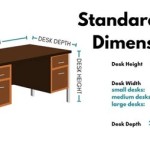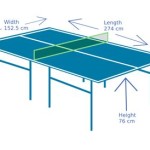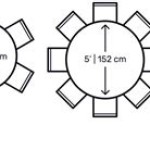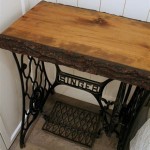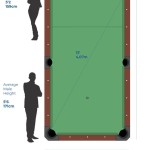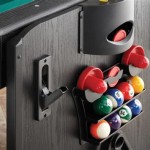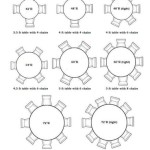Square Placemats For Table: A Comprehensive Guide
Square placemats for tables represent a practical and aesthetic addition to dining settings. They serve several key functions, from protecting tabletops from heat damage and spills, to enhancing the overall décor and creating a more defined space for each diner. Available in a vast array of materials, colors, and designs, square placemats offer versatility for both casual and formal dining experiences. This article delves into the various aspects of square placemats, exploring their benefits, different material options, appropriate usage, and how to select the best placemats to suit specific needs and preferences.
The primary purpose of a placemat is to safeguard the table surface. Without protection, tables are vulnerable to scratches from plates and cutlery, heat rings from hot dishes, and stains from spilled food or drinks. Square placemats act as a barrier, absorbing heat and preventing direct contact between potentially damaging items and the table's surface. This is particularly important for delicate surfaces like wood, glass, or polished stone, which are easily marred. Regularly using placemats can significantly extend the life of a table and preserve its aesthetic appeal.
Beyond protection, square placemats also contribute to the visual appeal of a dining setting. They can complement existing décor, add a pop of color, or create a more sophisticated ambiance. The shape of the placemat, specifically square, offers a structured and symmetrical look that can be particularly appealing with modern or minimalist table settings. A well-chosen placemat can tie together the entire table arrangement, harmonizing the tableware, linens, and overall aesthetic of the dining space.
Understanding Material Options for Square Placemats
The material of a square placemat significantly influences its durability, cleaning ease, appearance, and overall suitability for different dining situations. Several materials are commonly used in the production of square placemats, each with its own unique characteristics.
Fabric: Fabric placemats, often made from cotton, linen, or polyester blends, offer a wide range of colors, patterns, and textures. Cotton placemats are generally absorbent and easy to wash, but they may wrinkle easily and require ironing. Linen placemats offer a more luxurious feel, known for their natural texture and durability. Polyester blends are often more resistant to stains and wrinkles, making them a practical choice for everyday use. Fabric placemats can be machine washed and dried, simplifying cleanup after meals; however, heavier stains may require pre-treatment.
Vinyl: Vinyl placemats are a popular choice for their durability, water resistance, and easy maintenance. They are typically stain-resistant and can be easily wiped clean with a damp cloth, making them ideal for families with young children or for outdoor dining. Vinyl placemats come in a variety of colors and patterns, including those that mimic the look of natural materials like wood or leather. While durable, vinyl placemats may not be as heat resistant as some other materials, so caution should be exercised when placing very hot dishes directly on them.
Cork: Cork placemats offer a natural and rustic aesthetic. Cork is a highly renewable resource and provides excellent heat resistance, making it a good choice for protecting tables from hot dishes. Cork placemats are also slip-resistant, helping to keep plates and cutlery in place. However, cork can be porous and may stain if spills are not cleaned up promptly. Regular cleaning with a damp cloth is recommended to maintain the appearance of cork placemats.
Woven Materials: Woven placemats made from materials like bamboo, rattan, or jute offer a textural and organic look. These materials are generally durable and heat resistant, but they may be more difficult to clean than vinyl or fabric placemats. Spills can seep into the weave, requiring more thorough cleaning methods. Woven placemats are often best suited for casual dining settings and can add a touch of natural warmth to the table.
Silicone: Silicone placemats are a relatively new option, offering excellent heat resistance, flexibility, and non-slip properties. They are easy to clean, often dishwasher safe, and come in a variety of colors. Silicone placemats are a practical choice for everyday use and are particularly well-suited for use with children, as they are soft and less likely to break or crack.
Selecting the Right Size and Style
The size of a square placemat should be appropriate for the size of the table and the tableware being used. A placemat that is too small may not adequately protect the table, while one that is too large can overwhelm the dining space. A general guideline is to choose a placemat that leaves a few inches of exposed table around the edges. The standard size for a square placemat is typically between 12 and 14 inches per side.
The style of the placemat should complement the overall décor of the dining room and the existing tableware. Consider the color scheme, patterns, and textures of the room when selecting placemats. For a formal dining setting, elegant fabric placemats in neutral colors or subtle patterns may be appropriate. For a casual setting, bolder colors, patterns, or materials like vinyl or woven fibers can be used.
Consider the frequency of use and the level of maintenance required when choosing placemats. For everyday use, durable and easy-to-clean materials like vinyl or silicone are practical choices. For special occasions or formal dinners, more delicate materials like linen or embroidered fabrics may be preferred, although they may require more careful handling and cleaning.
The shape of the placemat also plays a role in the overall aesthetic. Square placemats offer a clean and structured look, which can be particularly appealing in modern or minimalist settings. They can be easily aligned on the table and create a sense of order. However, square placemats may not be the best choice for round tables, where round or oval placemats may be more visually appealing.
Maintaining and Caring for Square Placemats
Proper maintenance and care are essential for extending the life of square placemats and keeping them looking their best. The specific care instructions will vary depending on the material of the placemat.
Fabric placemats should be laundered regularly to remove stains and prevent the buildup of dirt and grime. Check the care label for specific washing instructions. Cotton and linen placemats can typically be machine washed and dried, but they may require ironing to remove wrinkles. Polyester blends are often more resistant to wrinkles and stains and may require less frequent laundering.
Vinyl placemats can be easily wiped clean with a damp cloth or sponge. For more stubborn stains, a mild detergent can be used. Avoid using abrasive cleaners or scouring pads, as these can scratch the surface of the vinyl. Allow vinyl placemats to air dry completely before storing them.
Cork placemats should be wiped clean with a damp cloth after each use. Avoid soaking cork placemats in water, as this can damage the material. For stubborn stains, a mild detergent can be used. Allow cork placemats to air dry completely before storing them.
Woven placemats made from materials like bamboo, rattan, or jute can be more challenging to clean. Use a soft brush or vacuum cleaner to remove loose crumbs and debris. For spills, blot the area immediately with a clean cloth. Avoid using excessive water, as this can damage the fibers. Professional cleaning may be required for heavy stains.
Silicone placemats are typically dishwasher safe, making them very easy to clean. They can also be wiped clean with a damp cloth or sponge. Avoid using abrasive cleaners or scouring pads, as these can scratch the surface of the silicone. Allow silicone placemats to air dry completely before storing them.
Proper storage is also important for maintaining the condition of square placemats. Store placemats flat or rolled to prevent creases and wrinkles. Avoid storing them in direct sunlight or in damp environments, as this can cause fading or mildew growth.

Square Placemats For Dining Table Easy To Clean Wipeable Washable Crossweave Heat Resistant Mats Non Slip Mat Kitchen Outdoor Decorations 6pcs Com

Square In A Placemats And Table Topper Connie Kresin Campbell

Square Rattan Placemat 15 Inch

Polyester Placemats Non Slip Square Farmhouse Style Table Temu
Square Table Mats Jute Place And Coasters Handmade Decor

Leather Placemats Cafe Bar Restaurant Table Mats Square Place For Dinning Personalized Placemat Custom Dining Mat

Square Placemat Linen Vintage Tassel Table Mat Anti Slip Temu

4 Pcs Table Mat Waterproof Heat Resistant Checkerboard Pattern Square Placemats Com

Cafe Bar Restaurant Table Mats Leather Placemats Square Place For Dinning Personalized Placemat Custom Dining Mat

Rustic Burlap Placemats Hemstitched Placemat Rectangle Fall Table Decorations Farmhouse Dining
Related Posts

